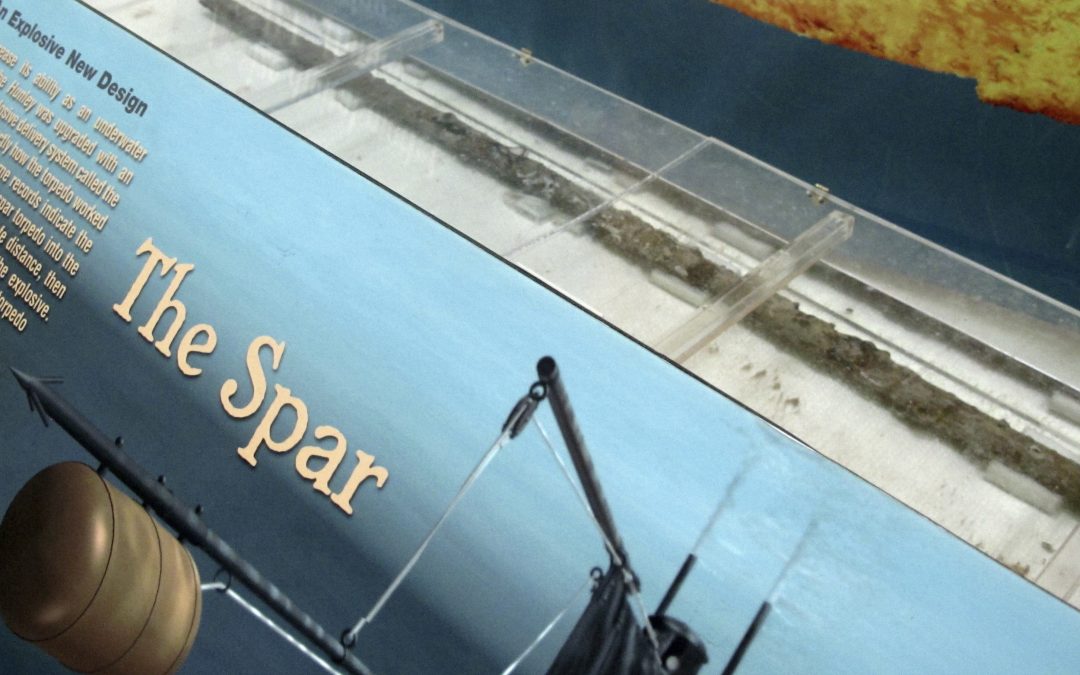DURHAM, N.C. (AP) — A former Duke University student believes she has solved the mystery of how the eight Confederate crew members on board the world’s first submarine to sink an enemy warship were killed, but the researchers with access to the sub say her theory is not new.
Rather than having drowned or suffocated, the men were actually killed by the same weapon they wielded, according to Rachel Lance, who earned a Ph.D. in biomedical engineering with her research last year.
The explosion from a keg of gunpowder from a 16-foot (5-meter) pole that stretched out from the H.L. Hunley in February 1864 created a blast wave that pulverized the lungs, brains and other soft tissue of the crew, killing them instantly, Lance said.
But Navy researchers helping with the official examination of the Hunley have studied the blast wave theory and have their doubts, Naval History and Heritage Command spokesman Paul Taylor said.
“The Navy has already examined the concussive wave theory. We found it highly unlikely to have injured the crew, let alone caused their deaths,” said Taylor, who added the team had not had time to review Lance’s research.
The Hunley was recovered from the bottom of Charleston Harbor off the South Carolina coast in 2000. Researchers have already figured out how it moved and submerged and surfaced, but one of the Hunley’s biggest remaining mysteries is how the Confederate crew died after sinking a Union blockade ship with the gunpowder keg.
The soft tissue that could prove Lance’s theory decomposed at the bottom of the ocean long ago. But she said the fact that the skeletons of the crew were found to be still at their stations in 2000 supports her idea that they died without any warning of danger.
She worked out her theory by using a 6-foot (2-meter) model of the Hunley, filling it with sensors and floating it in a pond as she subjected it to dozens of explosions.
“All the physical evidence points to the crew taking absolutely no action in response to a flood or loss of air,” she said.
The official scientists working to preserve the submarine in a North Charleston, South Carolina, laboratory, had no comment on Lance’s research, said Kellen Correia, executive director of the Friends of the Hunley. Correia pointed out Lance had no access to the primary evidence from the current research into the sub.
Those official researchers continue their work on several ways the men could have died, including the notion that the submarine had a leak and could not surface, or that the crew ran out of oxygen while underwater.
Lance said she sent the researchers emails to try to collaborate, but that didn’t work out.
Lance’s research, which cost about $4,000, examined how shock waves move through the ocean. One thing Lance found is that the waves move much slower in a frothy combination of air and water and could have taken up to six times as long to make it through the crew’s bodies, causing even more severe injuries, she said.
Lance is a scuba diver and a history buff thanks to her father, so she said her research into blast waves underwater made sense.
“I’ve always just been a really big fan of history, on top of that I was already in a lab where I was studying explosives and blast injuries so the Hunley just seemed like a natural fit,” she said.
Copyright (2017) Associated Press. All rights reserved. This material may not be published, broadcast, rewritten, or redistributed.
This article was from The Associated Press and was legally licensed through the NewsCred publisher network. Please direct all licensing questions to [email protected].
© Copyright 2018 Associated Press. All rights reserved. This material may not be published, broadcast, rewritten or redistributed.

